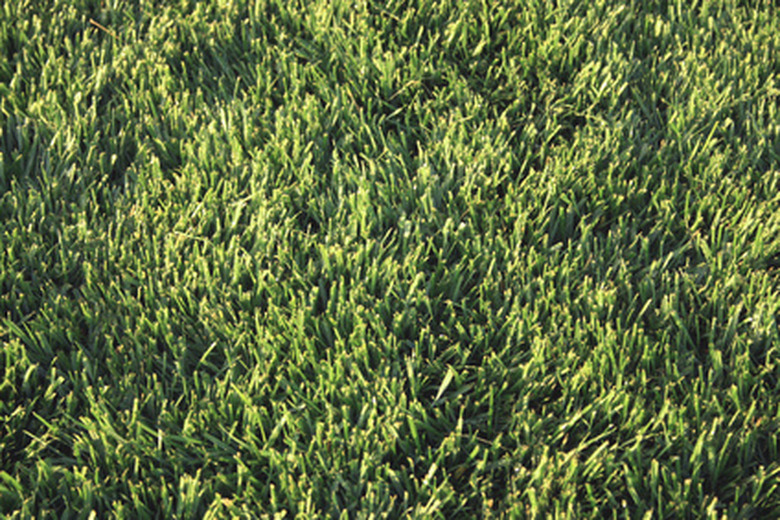How To Plant Grass Seed Under Straw
Things Needed
- Lawnmower
- Rake
- Grass seed
- Straw
- Water
- Sprinkler
Covering over grass seed with straw or hay helps prevent the seed from blowing away in wind, washing away in rain or getting eaten by birds. This will result in a thicker, more lush lawn once the seed germinates and grows. Planting the grass seed under straw will take a couple hours, depending on the size of your lawn. The two critical factors in grass seed success are watering and seed placement. The straw helps secure seeds, but gardeners must water regularly to ensure success.
Step 1
Mow over your existing lawn as short as possible with a lawnmower. If you have no ground cover, skip this step.
- Covering over grass seed with straw or hay helps prevent the seed from blowing away in wind, washing away in rain or getting eaten by birds.
- Planting the grass seed under straw will take a couple hours, depending on the size of your lawn.
Step 2
Rake over bare soil to loosen to top 1/4 inch if you have no ground cover. If you do have grass, rake over any bare or patchy spots on your lawn to loosen the soil.
Step 3
Scatter grass seed over the soil by hand. Plant Care recommends 4 pounds of grass seed per 1000 square feet of lawn. Scatter the seed horizontally, then cover the same area vertically to guard against patchiness.
Step 4
Rake the grass seed into the soil.
Step 5
Cover the newly planted seed with an even layer of straw. Do not apply the straw so thickly that you cannot see the topsoil below. Seed Superstore recommends one 80-pound bale for 1000 square feet of lawn and suggests barley, wheat or oat straw over hay, since hay will seed itself into the lawn.
- Rake over bare soil to loosen to top 1/4 inch if you have no ground cover.
- Seed Superstore recommends one 80-pound bale for 1000 square feet of lawn and suggests barley, wheat or oat straw over hay, since hay will seed itself into the lawn.
Step 6
Water the newly planted grass once you've applied the straw until the soil becomes moist.
Step 7
Water the lawn with a sprinkler three times a day for 10 minutes at a time, preferably in the morning, afternoon and evening. If you cannot water midday, water only in the morning and evening. Do not allow puddles to form. Water the lawn daily until the grass seed germinates, typically seven to 14 days.
Step 8
Remove the straw once you see the grass seed has germinated.
Tip
Grass is either warm-season or cold-season; each type has a different planting time. Plant cool-season grass in September or August and warm-season grass in May to June.
